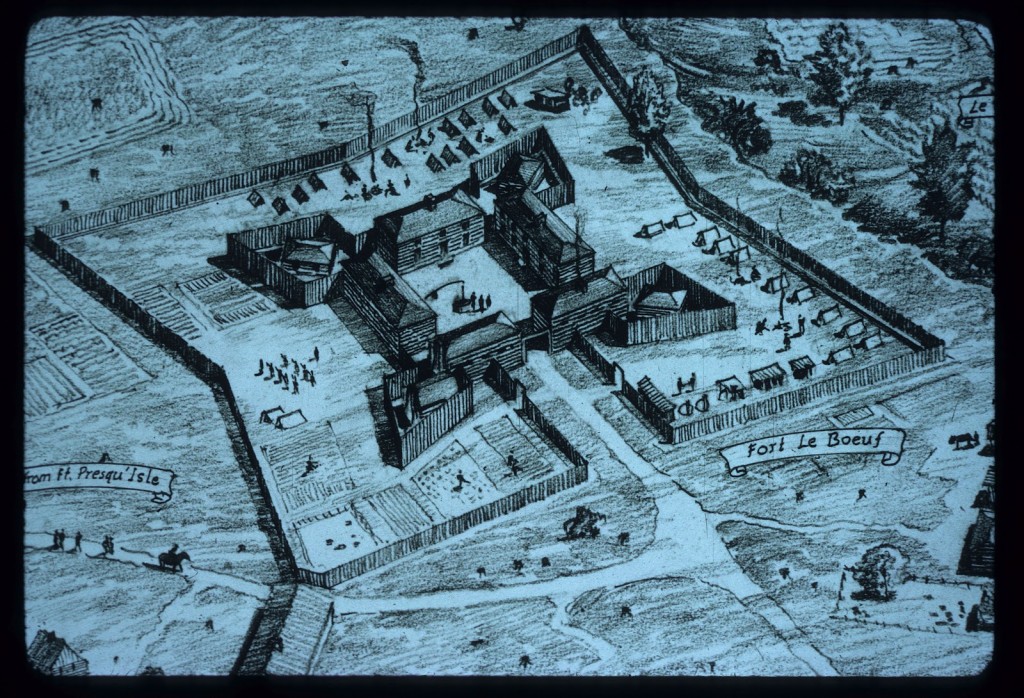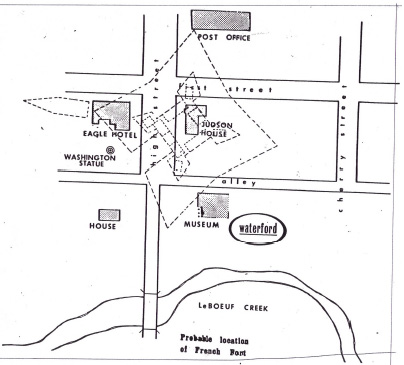Before Waterford was an official town, it was the home of Fort LeBoeuf, whose construction began July 11, 1753 by Captain Francois Le Mercier. This fort was part of a series of forts built to protect the French interests. On December 3, Jacques Legardeur de Saint-Pierre took command, after the death of Mercier. The then Governor of Virginia, Robert Dinwiddie, sent a 21-year-old George Washington from Williamsburg to Fort LeBoeuf with seven escorts, to deliver a message to the French demanding they leave what was then considered the Ohio Country. 
During his stay, Washington noted the fort had 100 men, a large number of officers, 50 birch canoes and 70 pine canoes, many unfinished. The fort stood on a south or west fork of French Creek, near the water and in fact, was almost surrounded by it. The fort sides were composed of 4 houses and bastions were made of piles driven into the ground standing over 12′ tall with a sharpened top with portholes for cannon and loop-holes for small-arms. Each bastion mounted eight six-pound cannons and one four-pound cannon guarded the gate. Inside the bastions, stood a guard-house, chapel, doctor’s lodging and the commander’s private stores. Outside the fort were several log barracks, some covered with bark, others with boards. In addition, there were stables, a smithy, and other buildings. The drawing shows a map drawn by Lieutenant Thomas Hutchins and Captain William Patterson in Oct. of 1759 based on ruins still visible. This general location is where the current Historic Campus housing the Judson House, Museum, Eagle Hotel and Washington Park currently stand.
In August 1759, during the French and Indian War, the commander of Fort Presque Isle sent a message to LeBoeuf to abandon their position. After the French complied, the British took possession of the Fort. It is unclear whether the French burned down Fort LeBoeuf when they abandoned it. If so, the British rebuilt it. In 1763, the fort was burned down by a war party of Native Americans during Pontiac’s Rebellion. The survivors managed to escape.
On 1 August 1794, Major Ebenezer Denny reported to Governor Mifflin from LeBoeuf. He described the fortification as having four blockhouses, manned by riflemen. The two rear blockhouses had a six-pound cannon on the second floor, as well as swivel guns over the gates.
When Judge John Vincent, grandfather of not yet born, General Strong Vincent, settled in Waterford in 1797, he wrote, “There are no remains of the old French fort excepting the traces on the ground…”
